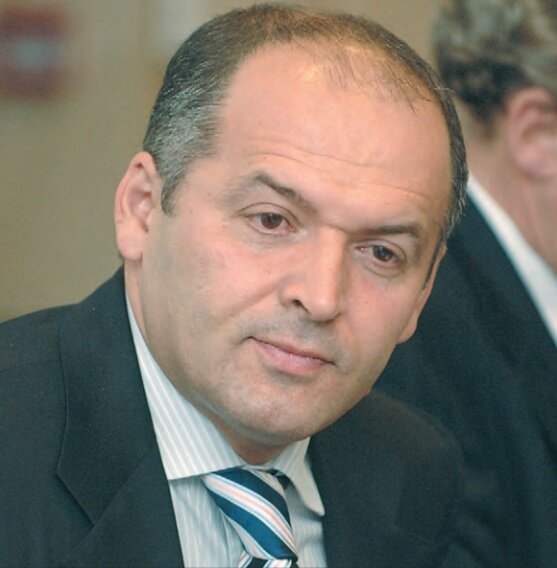Ukrainian tycoons are investing in brand new state-of-the-art facilities and large-scale modernization to improve energy efficiency
Ukrainian tycoons are continuing to wean their enterprises off increasingly expensive natural gas imported from Russia and Central Asia by investing in brand new state-of-the-art facilities and large-scale modernization to improve energy efficiency.
Interpipe, one of Ukraine’s largest industrial groups, on Feb. 26 unveiled plans to invest $610 million into construction of a new energy-efficient steel mill, which should help it effectively cut costs by reducing dependency on steel produced using gas-intensive technology. Interpipe is controlled by former President Leonid Kuchma’s son-in-law Viktor Pinchuk.
Italy’s Danieli, a leading supplier of equipment and technology to the metals industry, was hired to build the mill based on electric arc furnace technology, which saves on natural gas consumption during the production of high-quality steel.
After its completion, estimated within 30 months, the new Interpipe Steel factory will produce 1.3 million tons of steel annually, to be used to make seamless pipes and railway wheels at Interpipe’s other factories. Interpipe satisfies 4.3 percent of the world’s seamless pipe market and 12.8 percent of the international demand for railway wheels. Interpipe currently buys steel from other producers which largely rely on gas furnaces.
“Production facilities based on modern technology [will effectively] allow us to cut natural gas consumption eight-fold,” said Oleksandr Kirichko, general director of Interpipe’s steel pipe and railway wheel manufacturing operations.
Ukraine’s steel industry stepped up efforts to introduce energy-saving technology after the price for natural gas supplies upon imports from Russia and Central Asia doubled to $95 per 1,000 cubic meters at the beginning of 2006. Prices rose further this year to $130 per 1,000 cubic meters after Turkmenistan, Ukraine’s principle natural gas supplier, raised its export rate to $100 per 1,000 cubic meters.

Viktor Pinchuk, son-in-law to former Ukrainian President Leonid Kuchma, is one of several billionaires in the country investing heavily into energy efficiency at industrial see VISA, page 7 businesses that are feeling the pinch of rising natural gas prices. (Courtesy photo)
After transit costs and markups are added, Ukrainian industry gets their gas for about $175 per 1,000 cubic meters, much higher than they paid in previous years, but still lower than the prices paid by competitors further west in Europe. By reducing dependency on gas through the introduction of more efficient technology and switching to less expensive electricity-based technology, Ukraine’s industry can maintain its competitive advantage over foreign competitors who consume several-fold less gas per ton of steel produced. For now, electric arc furnace technology, one of the most advanced and energ-efficient in steel production, is rarely used in Ukraine.
“There are only two steel mills that use the electric arc furnace technology [the foreign-owned mini-mill] ISTIL and Dniprospetsstal, which together produce 3.5 percent of the country’s steel output,” said Oleksandr Martynenko, equity research analyst at Kyiv-based investment bank Foyil Securities.
“Approximately 52 percent of the steel is made using converter furnaces, and 45 percent in open-hearth furnaces, which are old-fashioned and energy-capacious,” Martynenko added.
To stay competitive, Ukrainian tycoons have rushed to modernize decades-old steel production facilities or build brand new, efficient steel mills from scratch, as Pinchuk is doing.
Kostyantin Zhevago, owner of a diversified business empire and a member of parliament, announced plans early in 2006 to invest more than $1.5 billion into two new steel mills.
A new company Zhevago has established, Vorskla Steel, plans to build a new steel mill with a 3-million-ton annual capacity in Poltava Region alongside an ore mine the businessman controls. The company also plans to build a rolling mill in Hungary that will process slabs from Ukraine.
Ukraine’s large industrial groups have indeed moved fast to boost efficiency, attracting large-scale loans from Western lenders.
In the past 12 months, Industrial Union of Donbass has received $500 million in loans from the International Finance Corporation, the World Bank’s private-sector arm, and the European Bank for Reconstruction and Development to implement energy-efficiency upgrades and reduce operating costs at its steel mills. Industrial Union of Donbass, also known as ISD Group, controls two steel mills in Ukraine and a coke plant. ISD has in recent years stretched its grip into Europe, acquiring Hungary’s Dunaferr and Poland’s Huta Czestochowa steel mills. The group has expressed plans to build a new rolling mill in Russia.
System Capital Management, a diversified holding owned by Ukraine’s richest tycoon, Rinat Akhmetov, last year invested $455 million into various modernization programs and energy-efficiency at its metallurgical assets, which include Ukraine’s Azovstal steel mill and Enakievskiy Metallurgical Works, Khartsyzskiy Pipe Plant and Italy’s Ferriera Vaslider.
What’s more, SCM secured a $400 million syndicated loan from France’s BNP Paribas S.A. that will be invested into enhancements of two ore-mining and processing plants.Ranked forth in terms of 2005 production, Zaporizhstal, a steel mill controlled by Canada-based Soviet emigre Alex Shnaider and Ukrainian businessman Eduard Shifrin, attracted almost $100 million in capital investments in 2006 and plans to invest around $250 million into its facilities this year.



